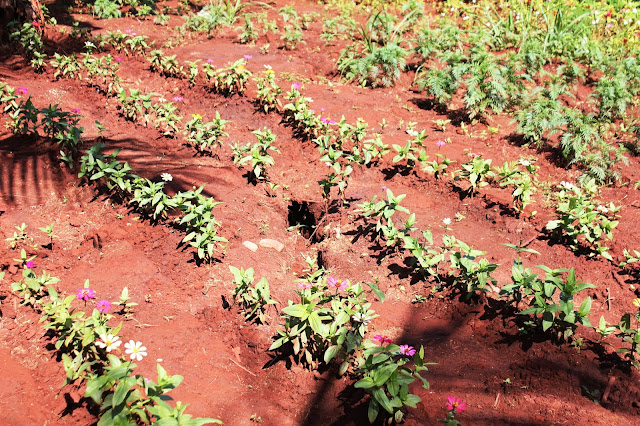Rio Tuba Visit: A Closer Look at PH Responsible Mining
Mining is a sensitive issue in our country right now. It is generally not good for the environment. However, Rio Tuba made us believe that there responsible mining that exists.
Our Batangas Press Club President, Mr. Joenald Rayos, invited me to go with him in a seminar in Palawan. I responded immediately since it would be an addition to my list of seminars. I did not expect that such was a Seminar-Workshop on Environmental Reporting prepared by the Philippine Press Institute.
It was on our third day that we were scheduled to have a mine site visit in Rio Tuba. Prior to the seminar, I searched about Rio Tuba and I was surprised that it was held as a model for mining in the Philippines. There are two companies here: Rio Tuba Nickel Mining Corporation (RTNMC) and Coral Bay Nickel Corporation (CBNC) both located in Rio Tuba, Bataraza, Palawan.
DENR, through Sec. Gina Lopez, expressed satisfaction with the companies' operations especially in terms of environmental protection and enhancement programs, as well as with the implementation of SDMP and CSR programs.
We were invited by Nickel Asia Corporation to show how RTNMC and CBNC operate. Questions were raised as soon as the press sit down with the RTNMC and CBNC representatives. Both sides were eager to prove how the companies came to be the presidential awardee and model of responsible mining in the country.
The media men gave a heads up when the companies led the way for the site visit. There, the group toured the hosing project, La Salle Greenhills-supervised Leonides Virata Memorial School, RTN’s mining areas and its mine tailings rehabilitation areas. In the course of the tour, the group engaged in the dialogue with the students, teachers, indigenous people, miners and employees regarding their concerns on environment, mining and livelihood.
We were quite surprised by the LED TV on each room used for AVPs and modules.
And believe it or not, the students are taught basic programming skills through Apple iMac computers that are closely monitored by the teachers.
The products of the schools are now successful professional.
Same with DENR Sec. Gina, the members of the press were left overwhelmed and satisfied with the corporate social responsibility programs of the companies particularly the rehabilitation of mined out areas. These proved that the aforesaid companies complied and adhered to existing mining-related laws.
And after having our lunch, we proceeded to the mine site visit.
We passed by the mine sites where the nickel laterites are extracted from.
When we arrived at the rehabilitation area, we were welcomed by Dr. Bibiano P. Ranes. He is Rio Tuba Nickel Mining Corporation's consultant and expert when it comes to integrated strategies for post mining ecosystems restoration.
He explained us about Rio Tuba's rehabilitation plan.
He also shared that some of the workers or miners are indigenous people (Palawan).
The rehabilitation effort was born to create a biodiversity area with varied species of vegetation, including native fruit bearing trees, flowers and medicinal plants that will be beneficial to wildlife species. There will be a cycle of regeneration that is continuously monitored by the companies’ expert foresters and group of IPs in the community.
I also tried the favorite game of the IPs there, the blow dart.
We saw how the place was restored through the growth of the plants in the whole area.
We saw the present mine site and the previous ones which are now converted into forests from then barren lands.
Engr. Jeb Badlon toured us to Phases 1 and 2 of the Tailing Rehabilitation Project.
There is a specific spot where the endemic trees are planted and observed if these will successfully grow in the tailings since there are no mineral present in the soil.
We're so amazed how medicinal plants, fruit-bearing trees and flowers grow in the are.
You can also have a beautiful sight of the plantation through this elevated observatory.
A steam can be also seen from the plant doing the processing of the nickel ore.
We also took a few minutes by resting in a nipa hut.
The rehabilitated areas were viewed as a success by the team of DENR Sec. Gina as well as the PPI group. They were positive that the “From a Mine to a Forest” project will be a sustainably managed forest potentially better than the stunted vegetation with mineralized soil.
As of press time, CBNC and RTNMC are the remaining mineral-related companies operating in Palawan, both having passed the DENR’s mining audit this year. This fact attests that the two companies implement environmental management measures based on best practices in mining industry.
As a souvenir, I got a photo of the nickel laterite from the site.
I hope that the companies will continue on being role models of gaining from the nature's gifts and giving back to mankind and mother nature in return.






































































0 comments:
Post a Comment